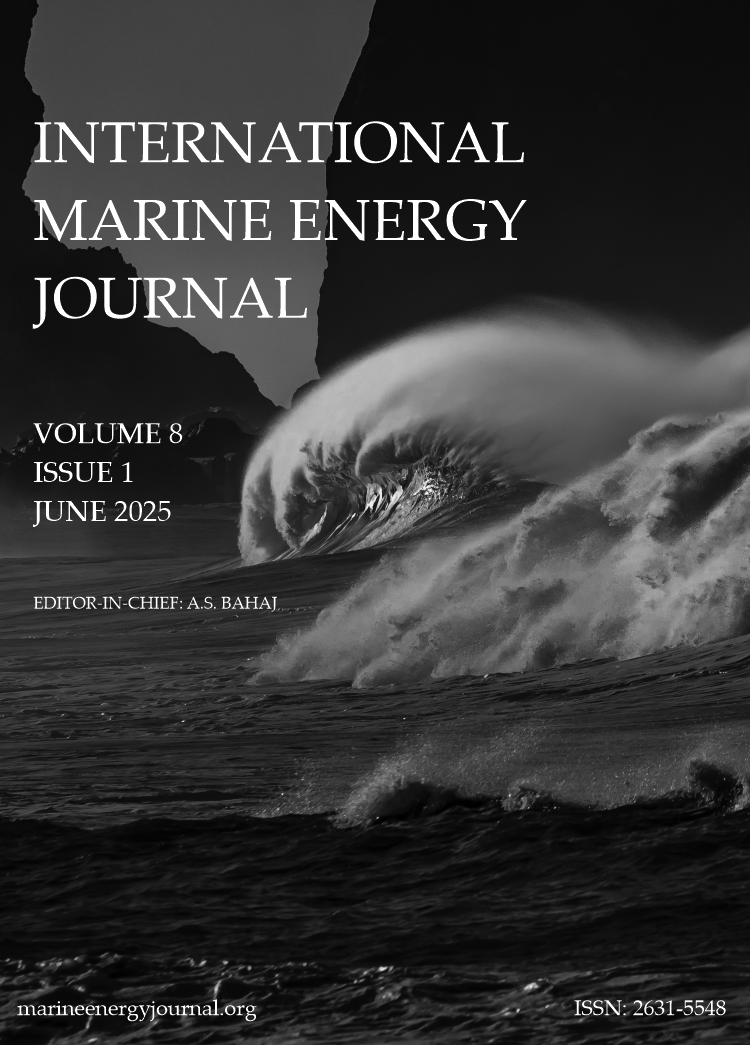Weight Reduction Methodologies for Wave Energy Devices
DOI:
https://doi.org/10.36688/imej.8.1-11Keywords:
LCOE, Fluid Structure Interaction, finite-element modelling, Oscillating water columnAbstract
The floating Backward Bent Duct (BDD) Buoy oscillating water column model generates electricity through the fluctuation in wave height. Wave energy conversion devices are often faced with a particularly high levelized cost of energy (LCOE) when compared to other renewable energy devices, and various investigations into bridging this gap have been carried out in recent history. Previous studies on the BBD Buoy have suggested that a significant reduction in required construction material is possible as a result of reduced differential pressures acting across the hull walls in operational conditions. Various structural analysis campaigns have been conducted on sections of the hull to assess this theory.
A Finite Element Analysis (FEA) was performed on a full-scale model of the BBD Buoy under extreme design wave loadings in based on wave data at EMEC’s Billia Croo test facility in Orkney, Scotland using Robot Structural Analysis software. A maximum pressure of 145 kPa was calculated for an 18.7 m peak wave height at Billia Croo. The BBD Buoy was modelled for both static and dynamic load conditions under various constraint layouts. A modal analysis was conducted on the model which estimates the natural frequency of the BBD Buoy to be approximately 6.67 Hz.
Downloads
Additional Files
Published
Versions
- 2025-06-24 (2)
- 2025-06-16 (1)
How to Cite
Issue
Section
License
Copyright (c) 2025 Michael O’Shea, Rory Sharvin

This work is licensed under a Creative Commons Attribution 4.0 International License.
I the author/we the authors understand that I/we retain copyright over our article. I/we grant a licence to IMEJ to: publish my/our article under the terms of the Creative Commons Attribution (CC BY) License which permits use, distribution and reproduction in any medium, provided the original work is properly cited, and identify IMEJ as the original publisher.


